Australians love to invest in property. At last count, Australian Taxation Office data showed 20% of Australian taxpayers are property investors, collectively owning 3.25 million investment properties.
If done right, investing in a rental property can be a highly effective way to build wealth. But it's not as easy as simply buying any old property and putting renters in it.
You need to be sure purchasing property aligns with your long-term investment goals and then find the 'right' property to suit your needs.
Many investors look to properties with high rental yields as their preferred investment strategy. After all, a higher rental yield can make the difference between a positively geared property and a negatively geared one.
Fortunately, there are many places across Australia where high yield properties can be found. But first, let's be clear on what a rental yield entails.
What is rental yield?
A property's rental yield is essentially the difference between what you make from renting it out, minus the overall costs of holding your investment.
It's typically expressed as a percentage. The higher the number, the greater the return on investment.
Which suburbs offer the highest rental yields in Australia?
The key to finding high-yield rental properties is generally to look for areas that have both affordable property prices and relatively high rental returns.
Typically, these areas are often located outside major capital cities, as cities tend to have more expensive housing and lower rents. But that's not always the case. In fact, as can be seen below, some of the highest yields available in Victoria are found in Melbourne.
Here are the top three areas in each state with the best rental yields, as at August 2024:
Highest Rental Yields in New South Wales (NSW)
Houses
| Suburb (Postcode) | LGA | Median Price | Median Rent | Rental Yield |
|---|---|---|---|---|
| Broken Hill (2880) | Broken Hill | $190,000 | $340 | 9.3% |
| South Lismore (2480) | Lismore | $285,000 | $450 | 8.2% |
| Peak Hill (2869) | Parkes | $202,500 | $290 | 7.4% |
Source: CoreLogic. Data reported to the period ending August 2024. Median values account for sales transactions over three months.
Units
| Suburb (Postcode) | LGA | Median Price | Median Rent | Rental Yield |
|---|---|---|---|---|
| Moree (2400) | Moree Plains | $221,500 | $295 | 6.9% |
| Scone (2337) | Upper Hunter | $320,000 | $422 | 6.9% |
| Tolland (2650) | Wagga Wagga | $236,000 | $300 | 6.6% |
Source: CoreLogic. Data reported to the period ending August 2024. Median values account for sales transactions over three months.
Highest Rental Yields in Victoria
Houses
| Suburb (Postcode) | LGA | Median Price | Weekly Median Advertised Rent | Gross Rental Yield |
|---|---|---|---|---|
| Ouyen (3490) | Mildura | $192,500 | $328 | 8.8% |
| Rochester (3561) | Campaspe | $299,000 | $490 | 8.5% |
| Warracknabeal (3393) | Yarriambiack | $212,000 | $325 | 8.0% |
Source: CoreLogic. Data reported to the period ending August 2024. Median values account for sales transactions over three months.
Units
| Suburb (Postcode) | LGA | Median Price | Weekly Median Advertised Rent | Gross Rental Yield |
|---|---|---|---|---|
| Melbourne (3000) | Melbourne | $413,000 | $640 | 8.1% |
| Notting Hill (3168) | Monash | $340,000 | $500 | 7.6% |
| Carlton (3053) | Melbourne | $350,000 | $500 | 7.4% |
Source: CoreLogic. Data reported to the period ending August 2024. Median values account for sales transactions over three months.
Highest Rental Yields in Queensland
Houses
| Suburb (Postcode) | LGA | Median Property Price | Median Weekly Asking Rent | Average Rental Yield |
|---|---|---|---|---|
| Collinsville (4804) | Whitsunday | $161,250 | $380 | 12.3% |
| Pioneer (4825) | Mount Isa | $187,500 | $400 | 11.1% |
| Wandoan (4419) | Western Downs | $175,000 | $370 | 11.0% |
Source: CoreLogic. Data reported to the period ending August 2024. Median values account for sales transactions over three months.
Units
| Suburb (Postcode) | LGA | Median Property Price | Median Weekly Asking Rent | Average Rental Yield |
|---|---|---|---|---|
| Moranbah (4744) | Isaac | $295,000 | $700 | 12.3% |
| Koongal (4701) | Rockhampton | $175,000 | $345 | 10.3% |
| Dysart (4745) | Isaac | $206,000 | $385 | 9.7% |
Source: CoreLogic. Data reported to the period ending August 2024. Median values account for sales transactions over three months.
Highest Rental Yields in Western Australia (WA)
Houses
| Suburb (Postcode) | LGA | Median Price ($) | Weekly Advertised Rent ($) | Gross Rental Yield (%) |
|---|---|---|---|---|
| Coolgardie (6429) | Coolgardie | $120,000 | $400 | 17.3% |
| Kambalda East (6442) | Coolgardie | $142,000 | $360 | 13.2% |
| South Boulder (6432) | Kalgoorlie-Boulder | $205,000 | $490 | 12.4% |
Source: CoreLogic. Data reported to the period ending August 2024. Median values account for sales transactions over three months.
Units
| Suburb (Postcode) | LGA | Median Price | Weekly Median Advertised Rent ($) | Gross Rental Yield |
|---|---|---|---|---|
| Baynton (6714) | Karratha | $456,000 | $1,325 | 15.1% |
| Broome (6725) | Broome | $262,500 | $650 | 12.9% |
| South Hedland (6722) | Port Hedland | $294,500 | $725 | 12.8% |
Source: CoreLogic. Data reported to the period ending August 2024. Median values account for sales transactions over three months.
Highest Rental Yields in South Australia (SA)
Houses
| Suburb (Postcode) | LGA | Median Price | Weekly Median Advertised Rent ($) | Gross Rental Yield |
|---|---|---|---|---|
| Port Pirie West (5540) | Port Pirie | $197,500 | $330 | 8.7% |
| Solomontown (5540) | Port Pirie | $204,000 | $340 | 8.7% |
| Port Augusta (5700) | Port Augusta | $224,135 | $320 | 7.4% |
Source: CoreLogic. Data reported to the period ending August 2024. Median values account for sales transactions over three months.
Units
| Suburb (Postcode) | LGA | Median Price | Weekly Median Advertised Rent ($) | Gross Rental Yield |
|---|---|---|---|---|
| Roxby Downs (5725) | Roxby Downs | $142,000 | $300 | 11.0% |
| Whyalla (5600) | Whyalla | $165,000 | $265 | 8.4% |
| Keswick (5035) | West Torrens | $342,500 | $450 | 6.8% |
Source: CoreLogic. Data reported to the period ending August 2024. Median values account for sales transactions over three months.
Highest Rental Yields in Tasmania
Houses
| Suburb (Postcode) | LGA | Median Price | Weekly Median Advertised Rent | Gross Rental Yield |
|---|---|---|---|---|
| Queenstown (7467) | West Coast | $187,500 | $295 | 8.2% |
| Zeehan (7469) | West Coast | $200,000 | $300 | 7.8% |
| Herdsmans Cove (7030) | Brighton | $355,150 | $440 | 6.4% |
Source: CoreLogic. Data reported to the period ending August 2024. Median values account for sales transactions over three months.
Units
| Suburb (Postcode) | LGA | Median Price | Weekly Median Advertised Rent | Gross Rental Yield |
|---|---|---|---|---|
| Bridgewater (7030) | Brighton | $345,000 | $400 | 6.0% |
| Upper Burnie (7320) | Burnie | $293,500 | $325 | 5.8% |
| Newnham (7248) | Launceston | $340,000 | $370 | 5.7% |
Source: CoreLogic. Data reported to the period ending August 2024. Median values account for sales transactions over three months.
Highest Rental Yields in Northern Territory (NT)
Houses
| Suburb (Postcode) | LGA | Median Price | Weekly Median Advertised Rent | Gross Rental Yield |
|---|---|---|---|---|
| Katherine South (850) | Katherine | $280,000 | $460 | 8.5% |
| Tennant Creek (860) | Barkly | $280,000 | $440 | 8.2% |
| Katherine East (850) | Katherine | $355,000 | $550 | 8.1% |
Source: CoreLogic. Data reported to the period ending August 2024. Median values account for sales transactions over three months.
Units
| Suburb (Postcode) | LGA | Median Price | Weekly Median Advertised Rent | Gross Rental Yield |
|---|---|---|---|---|
| Karama (812) | Darwin | $252,500 | $450 | 9.3% |
| Gray (830) | Palmerston | $250,000 | $440 | 9.2% |
| Sadadeen (870) | Alice Springs | $255,000 | $445 | 9.1% |
Source: CoreLogic. Data reported to the period ending August 2024. Median values account for sales transactions over three months.
Highest Rental Yields in Australian Capital Territory (ACT)
Houses
| Suburb (Postcode) | Median Price ($) | Weekly Median Rent ($) | Rental Yield (%) |
|---|---|---|---|
| Phillip (2606) | $552,500 | $550 | 5.2% |
| Greenway (2900) | $597,500 | $520 | 4.5% |
| Strathnairn (2615) | $885,000 | $765 | 4.5% |
Source: CoreLogic. Data reported to the period ending August 2024. Median values account for sales transactions over three months.
Units
| Suburb (Postcode) | Median Price ($) | Weekly Median Rent ($) | Rental Yield (%) |
|---|---|---|---|
| Hawker (2614) | $360,000 | $480 | 6.9% |
| Lyons (2606) | $365,000 | $475 | 6.8% |
| Curtin (2605) | $377,500 | $490 | 6.7% |
Source: CoreLogic. Data reported to the period ending August 2024. Median values account for sales transactions over three months.
Different types of rental yield
Rental yield can be calculated in a few different ways. It can pay to understand the difference between the various types of yield calculations when considering an investment in property.
Gross rental yield
The gross rental yield is a reflection of the income an investment property makes before additional expenses are deducted.
It's calculated by taking a property's annual rental income, dividing it by the property's value, and then multiplying by 100.
Here's an example of how the gross rental yield for a $650,000 property with a rental rate of $450 per week would be calculated:
$450 x 52 = $23,400
$23,400 / $650,000 = 0.036
0.036 x 100 = 3.6%
Net rental yield
The net rental yield, on the other hand, is the income an investment property makes after expenses have been deducted.
These expenses can include costs associated with buying the property, such as stamp duty, legal fees, building inspections, and rental-related costs such as advertising and income loss due to vacancy.
Repair and maintenance costs, management fees, and insurance premiums are also included in the calculation.
As an aside, many of these costs can be claimed as tax deductions, perhaps making property investments more attractive.
Net yield is calculated by taking the annual rental income and then subtracting the yearly expenses. The difference is then divided by the property's value and multiplied by 100.
Here's how the net rental yield on our $650,000 property would be calculated, assuming it had demanded a total of $4,000 worth of expenses:
$23,400 - $4,000 = $19,400
$19,400 / $650,000 = 0.0298
0.0298 x 100 = 2.98%
Is it best to consider return or yield?
You might hear property types talk about return and yield. The two measures are similar in some ways, but quite different. Which one is most useful to you will likely depend on your investment strategy.
As discussed above, yield is a measure of the income brought in by a property compared to its price, with a higher yield signifying a property costs comparatively less to buy than it does to rent.
Unlike yield, return is also focused on the investment's capital growth. It's defined as the gain, or loss, made on an investment during a specified period and where capital growth is included.
Many property experts say rental yield should not be a sole consideration when investing in property, believing a balance between rental yield and capital growth plays a crucial role in helping investors achieve a sustainable portfolio.
But, if you're after ready cash flow from a property investment, yield will likely be your go-to measure.
What is a good rental yield?
A 'good' gross rental yield in Australia - that is, one considered relatively high - typically ranges from around:
-
5% to 8% for residential properties
-
6% to 10% for commercial properties
A good net rental yield typically ranges from:
-
3% to 6% for residential properties
-
4% to 8% for commercial properties
It pays to remember, what is a 'good' rental yield for one investor won't be the same for another. Investment decisions should always be made on a personal level, factoring in your individual risk tolerance and strategy.
Property undervaluation or overvaluation can also skew yield figures. In some cases, higher yields may also indicate higher risks or potential issues with the property or the location (which we'll look at in more depth below).
Finding a low interest investment loan
Securing an investment loan with the lowest possible monthly repayments can have a significant bearing on whether your rental property is high or low yielding.
If you're in the market for a competitive investment loan, the table below has some of the lowest interest rates on the market.
| Lender | Home Loan | Interest Rate | Comparison Rate* | Monthly Repayment | Repayment type | Rate Type | Offset | Redraw | Ongoing Fees | Upfront Fees | Max LVR | Lump Sum Repayment | Extra Repayments | Split Loan Option | Tags | Features | Link | Compare | Promoted Product | Disclosure |
|---|---|---|---|---|---|---|---|---|---|---|---|---|---|---|---|---|---|---|---|---|
5.59% p.a. | 5.63% p.a. | $2,867 | Principal & Interest | Variable | $0 | $530 | 80% |
| Promoted | Disclosure | ||||||||||
5.34% p.a. | 5.25% p.a. | $2,789 | Principal & Interest | Variable | $0 | $0 | 80% |
| Disclosure | |||||||||||
5.49% p.a. | 5.54% p.a. | $2,836 | Principal & Interest | Variable | $0 | $1,100 | 60% | Disclosure | ||||||||||||
5.64% p.a. | 5.67% p.a. | $2,883 | Principal & Interest | Variable | $0 | $845 | 60% | |||||||||||||
5.49% p.a. | 5.50% p.a. | $2,836 | Principal & Interest | Variable | $0 | $0 | 60% | |||||||||||||
5.59% p.a. | 5.63% p.a. | $2,867 | Principal & Interest | Variable | $0 | $530 | 90% |
| Promoted | Disclosure | ||||||||||
5.69% p.a. | 5.75% p.a. | $2,899 | Principal & Interest | Variable | $0 | $835 | 80% | |||||||||||||
5.54% p.a. | 5.79% p.a. | $2,852 | Principal & Interest | Variable | $248 | $350 | 80% | |||||||||||||
5.64% p.a. | 5.65% p.a. | $2,883 | Principal & Interest | Variable | $0 | $0 | 80% | |||||||||||||
5.54% p.a. | 5.67% p.a. | $2,852 | Principal & Interest | Variable | $10 | $150 | 80% | |||||||||||||
5.89% p.a. | 5.90% p.a. | $2,962 | Principal & Interest | Variable | $0 | $100 | 80% | |||||||||||||
5.79% p.a. | 5.79% p.a. | $2,931 | Principal & Interest | Variable | $0 | $0 | 60% | |||||||||||||
5.89% p.a. | 5.92% p.a. | $2,962 | Principal & Interest | Variable | $0 | $845 | 80% | |||||||||||||
5.69% p.a. | 5.70% p.a. | $2,899 | Principal & Interest | Variable | $0 | $0 | 70% | |||||||||||||
6.74% p.a. | 6.71% p.a. | $2,808 | Interest-only | Variable | $8 | $350 | 90% | |||||||||||||
5.79% p.a. | 5.77% p.a. | $2,413 | Interest-only | Variable | $0 | $530 | 80% |
| Promoted | Disclosure |
Is having high rental yield important?
If you're aiming to achieve good cash flow from your property investment straight up - or have it positively geared - yield is the measure you're likely to focus on. Generally, a rental yield of 5.5% or above can best help you achieve this.
If your investment strategy is to negatively gear your property for tax or other purposes, rental yield is likely to be less important to you. You may be more interested in the potential for capital growth which is more a long-term proposition.
How to find the best rental yield
Many experts agree that the choice of property can make or break an investor. If you're looking for rental yield, here are some important considerations:
1. Location
As with all property purchases, location is crucial. It has a major impact on rental demand, tenant quality, and rate of returns. If the property is in a high-growth market, it's more likely these factors will also increase.
Some good indicators of a high-growth area include a growing population, proximity to public amenities, a strong job market, low crime rate, accessibility to public transport, favourable taxes, and affordable insurance rates.
Ironically, many of the highest yielding areas across the country don't tick all these boxes. We'll touch on some of the risks that may be associated with the highest yielding locations below.
2. High rental demand
An area with a low number of rental listings and vacancies generally shows a strong rental market. Low vacancy rates may also allow landlords to more easily raise rents in order to boost their returns.
See also: A landlord's guide to rent increases by state
3. Condition of the property
When selecting the ideal rental property, it's probably preferable to find one in a suitable condition to rent immediately. Extensive repair and maintenance expenses can eat into investor funds and have a significant effect on cash flow.
4. Positive cash flow
Speaking of cash flow, a high yielding investment property may be more likely to generate a positive cash flow every month than a low yielding one. If this is your investment strategy, it's likely worth scouring the market for high yielding dwellings (though, we'll delve into some of the risks associated with doing so below).
What are the downsides of high yield properties?
While making more cash every month on an investment property than that property demands is a great outcome, there are some other factors to take into consideration.
1. Potential for capital growth
The trade-off with many high yield rental properties can be a lower potential for capital growth.
The capacity for robust growth tends to occur in metropolitan markets or in other highly sought after locations.
These areas tend to have lower rental yields because of their high get-in price, relative to the rental income they can generate.
2. Quality of tenant
At the risk of overgeneralising, some areas with high rental yields and lower property prices may not always attract the best tenants.
Properties can typically only be high yielding if tenants consistently pay rent and respect the property.
Of course, you can get good and bad tenants anywhere. It is an inherent risk of investing in property.
3. Locations can change quickly
Often, high yield properties are found in less stable property markets.
Perusing the list of locations above, you may notice a lot of the highest yielding suburbs are in remote and regional Western Australia and Queensland, particularly in mining towns.
Properties in these areas can produce eye-watering rental yields, but a downturn in the commodities produced locally, or a shift in economic conditions more generally, can see both yields and property values plummet rapidly.
See also: cheapest suburb rentals in Sydney
Collections: Property Investment




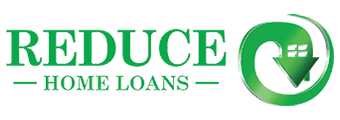




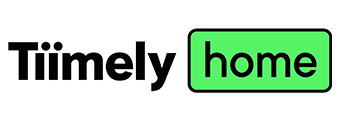

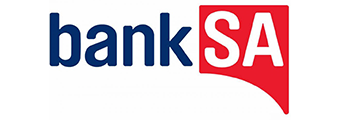




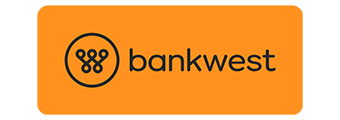

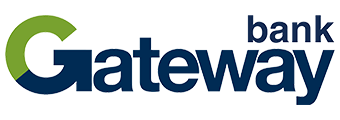
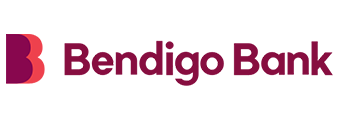
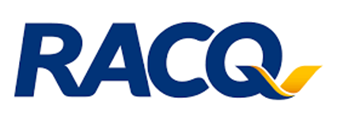
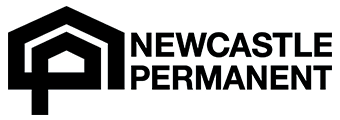



Share